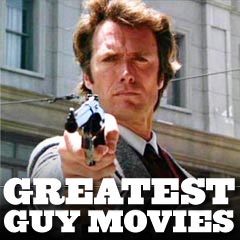
|
of All-Time 1995 |
![]()
![]()
![]()
![]()
![]()
![]()
![]()
![]()
![]()
![]()
![]()
![]()
![]()
![]()
![]()
![]()
![]()
| Movie Title/Year and Brief Description, Including Great Quotes and Scenes | ||
  |
Bad Boys (1995) Sequel: Bad Boys II (2003) Bad Boys was action film director Michael Bay's first feature film (it was produced by actioners Don Simpson and Jerry Bruckheimer) - his first of two films laden with special effects. His directorial style was known for hyped scenes of fast car chases, blasting firearms, sex-jokes, profanity and noisy explosions especially attractive for hyper-active teenaged boys. The original film paired black stars Martin Lawrence and Will Smith as Miami narcotics cops Marcus Burnett (a sexually-deprived family man) and Mike Lowrey (a swinging playboy bachelor), who were forced to switch their marital roles (with Burnett impersonating Lowrey) during an investigation. The buddy duo was entrusted with protecting informant Julie Mott (Tea Leoni) who witnessed the murder of her pretty best friend-prostitute Max Logan (Karen Alexander) by the film's leading suspect - a villainous French drug dealer Fouchet (Tchéky Karyo) who stole $100 million dollars worth of impounded heroin from the police department. In the sequel, the duo were in pursuit of ecstasy drug dealer/smuggler Johnny Tapia (Jordi Molla). Jamaican gangsters tossed cars (15 Mercedes Benz) from a transporter at the detectives driving high-speed on the freeway, resulting in carnage-damage to dozens of cars on the freeway, the transporter, and a boat. The film also featured the disturbing and controversial fascistic characters of the two detectives, including aiming a gun and threatening a 10 year old boy, making wisecracks while tossing corpses out of a morgue transport vehicle onto a freeway, and the demolition of a Cuban tent city with tanks.
- "Now back up, put the gun down, and get me a pack
of Tropical Fruit Bubblicious." "You know, you drive almost slow enough to drive Miss Daisy." "You know I'm a better cop when I get some in the morning, I feel lighter on my feet."
In Bad Boys, the climactic shootout inside an airplane hangar, including the explosive destruction of a 727 jet airplane. In the memorably gruesome, disrespectful but funny morgue sequence in Bad Boys II, the two cops searched through various cut-open body cavities of bodies in search of concealed drugs. Voluptuous Jessica Karr (as "Female Corpse") was laid out on one of the cold slabs -- Marcus confessed to Mike that he couldn't help but innocently ogle the naked female's stiff chest ("What? I ain't doin' nothin'. What am I gonna do with these big-ass fake dead titties?"), and was then forced to hide under the sheet next to the well-endowed cadaver. |
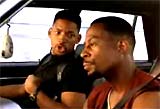 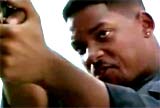   Bad Boys (1995)  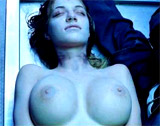 Bad Boys II (2003) |
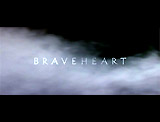
|
Braveheart (1995) Producer-director-actor Mel Gibson's 13th century melodramatic historical war epic was a major award winner, including Best Picture and Best Director. Although it was often historically inaccurate (faces weren't painted and kilts were not worn by the Scots), Gibson memorably portrayed the heroic Scottish freedom fighter William Wallace in this rousing, three hour film, who victoriously fought against the army of the oppressive and tyrannical King Edward I "Longshanks" (Patrick McGoohan) at Stirling Bridge in 1297. The central battle sequence was vividly portrayed and masterfully filmed to increase tension ("Hold...Hold...Hold"). He was spurred to revolt and righteous anger against the monarchy after his childhood sweetheart and secretly-wed wife Murron (Catherine McCormack) was raped and had her throat slit. Wallace's rousing, emotional and inspiring speeches to his loyal often outnumbered followers were frequent, such as: "I AM William Wallace! And I see a whole army of my country men, here, in defiance of tyranny. You've come to fight as free men, and free men you are. What will you do with that freedom? Will you fight?...Aye, fight and you may die. Run, and you'll live - at least awhile. And dying in your beds, many years from now, would you be willing to trade ALL the days, from this day to that, for one chance, just one chance, to come back here and tell our enemies that they may take our lives, but they'll never take OUR FREEDOM!"
Wallace was defeated at the Battle of Falkirk, captured and tried for high treason, and beheaded in a long and sadistic torture scene at the film's conclusion in which he cried out: "Freedom!" Wallace was courageously tortured ("I'm not dead yet"). He was partially hung, racked, disemboweled, and beheaded (offscreen) - while reuniting with his already-murdered wife seen walking in the crowd as a ghost. |
   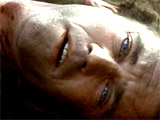 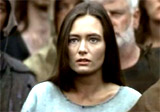 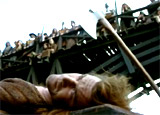
|
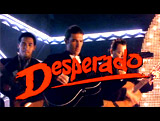
|
Desperado (1995) Writer/director Robert Rodriguez' 'spaghetti-western' and Hong Kong-styled action film (a big-budget, English-language remake of his own cult classic El Mariachi (1992)), was great for action-hungry fans who wanted spectacularly cartoonish, balletic violence with lots of blood. It featured attractive stars with sizzling eroticism between them:
El Mariachi sought to avenge the death of his previous lover, tracking down psychotic Mexican drug lord Bucho (Joachim de Almeida) and his gang. The film included shootouts in a seedy cantina and on rooftops, with two-fisted gunfighting and sailing bodies through the air.
"You drive around town, you see someone you don't know, you shoot them. How hard is that?" "Bless me, Father, for I have just killed quite a few men."
The smoldering love scene between girlfriend Carolina and El Mariachi in a candle-lit room - shot with original camera angles and flash-cuts. |
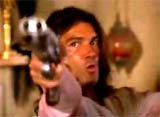  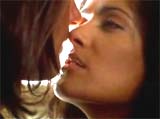 
|

|
Heat (1995) Writer/director Michael Mann's compelling, three-hour LA crime thriller/drama centered its tension-filled story around jaded and obsessed LA detective/cop Vincent Hanna's (Al Pacino) search for notoriously disciplined professional thief Neil McCauley (Robert De Niro). [It marked the first time the two powerhouse male actors appeared together on screen, although they co-starred in The Godfather, Part II (1974).] The crime film had its share of shoot-outs, violent deaths, chase scenes and action (especially an armored car robbery in downtown LA that went awry, and a second downtown shootout during a bank robbery), although it also emphasized the women in the men's lives: Hanna's third wife Justine (Diane Venora) in a fractured marriage, and McCauley's unknowing girlfriend and graphic artist Eady (Amy Brenneman).
- "I told you, when we hooked up, baby, that you
were gonna have to share me with all the bad people and all the ugly
events on this planet."
"A guy told me one time: 'Don't let yourself get attached to anything you are not willing to walk out on in 30 seconds flat if you feel the heat around the corner.'"
The confrontational showdown scene in a restaurant between two similar men representing different sides of the law: Hanna and McCauley, as they conversed over a cup of coffee, and both vowed to take the other down if necessary and without hesitation, and the final night-time climax between the two. |
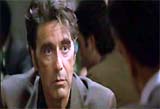 
|

|
Se7en (1995) This grisly David Fincher crime thriller introduced the meticulous character of soon-to-retire, weary veteran Det. Lt. William Somerset (Morgan Freeman) after 32 years. In the film's opening, he was going about his orderly and precise morning routine in his furnished bachelor apartment. The wise, perceptive and methodical homicide investigator was set in contrast to his headstrong replacement partner, young reckless rookie David Mills (Brad Pitt), in their pursuit of a diabolical serial killer named John Doe (an unbilled Kevin Spacey) who had staged murders. All of the killer's seven murders in the film were inspired by the legendary Seven Deadly Sins (Gluttony, Greed, Sloth, Lust, Pride, Envy, and Wrath). The last two crimes included a souvenir - "her pretty head" (a severed head, never shown) delivered in a bloody cardboard box, demonstrating the last two of the Seven Deadly Sins. The film's best acted sequence was a diner scene between Somerset and Mills' unhappy relocated wife Tracy (Gwyneth Paltrow) who had just moved to the city from upstate. She confided in him about her unrevealed pregnancy - he advised her that the city was no place for a family, and that if she aborted, she shouldn't ever tell her husband that she was pregnant. If she went ahead, however, he said: "You spoil that kid every chance you get." Sociopathic serial killer John Doe voluntarily turned himself in at the police station in a startling, last-reel revelation. He walked in, yelled out repeatedly to rookie Detective David Mills: "DETECTIVE!" and then admitted: "You're looking for me." Obviously he had just committed another crime because his shirt was spattered with blood. Shortly later after he had led the pair of detectives to another sick and gruesome crime scene, he admitted his grisly final misdeed to married detective Mills (see quote below). Doe confessed to the sin of Envy before killing Mills' wife Tracy and having her head delivered to their location in the middle of the desert (although Mills was skeptical at first). Somerset knew that Mills was being set up to shoot and kill Doe (Doe: "Become vengeance, David...Become Wrath"). To demonstrate Wrath, anguished and angered Lt. Mills vengefully shot Doe in the head, and then emptied his gun of bullets into Doe's body, in exchange for his pregnant wife's beheading. Mills was taken into custody for the shooting and driven away.
"I wish I could have lived like you, David...Do you hear me, detective? I'm trying to tell you how much I admire you and your pretty wife...Tracy...It's disturbing how easily a member of the press can purchase information from the men in your precinct... I visited your home this morning after you'd left. I tried to play husband. I tried to taste the life of a simple man. It didn't work out. So I took a souvenir: Her pretty head...Because I envy your normal life, it seems that envy is my sin...She begged for her life, detectives...She begged for her life and for the life of the baby inside of her. Oh! (turning to Det. Somerset) He didn't know." "Ernest Hemingway once wrote, 'The world is a fine place and worth fighting for.' I agree with the second part."
The concluding head-in-a-box scene. |
  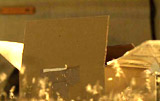  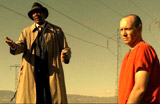 
|

|
Showgirls (1995) This 'guilty-pleasure' popular cult film was the second pairing of director Paul Verhoeven (known for RoboCop (1987) and Basic Instinct (1992)) and screenwriter Joe Eszterhas (also for Basic Instinct (1992)). It was a sleazy, big-budget 'adult-oriented' film that became a camp classic instead. The outlandish, over-the-top film marked a milestone in film history - it was the first NC-17 rated film with a wide mainstream release. Although it was the first big-budget, adults-only film in many years (after Caligula (1979) and Philip Kaufman's Henry & June (1990)), it turned out to be both a critical and commercial failure, and grossed only $20 million (half of its budgeted cost). Feature film newcomer Elizabeth Berkley (of TV's Saved By the Bell) starred as 23 year-old Nomi Malone - a stripper turned Las Vegas showgirl-dancer in a soul-less, exploitative plot with mostly repugnant characters. First working at the sleazy Cheetah Club where she performed pole and lap dances, Nomi graduated to the Stardust's "Goddess" topless dance show (where she contributed her characteristically-jerky dance moves) with scores of half-naked dancers. There, she developed a love-hate attraction for bi-sexual, trashy diva star Cristal Connors (Gina Gershon), who headlined and made her flashy entrance from an exploding volcano. The film was considered senseless, violent, and actually sexually boring or desensitizing, although it contained lots of gratuitous nudity. A 15th Anniversary DVD version, a "Sinsational" Edition, was released to commemorate its longevity.
"I'm erect. Why aren't you erect?"
Nomi's pole-dancing at the Cheetah Club and her slithering, intercourse-simulating lapdance for Cristal's boyfriend Zack Carey (Kyle MacLachlan), a naturally-degrading topless dancer audition scene, the extravagant Stardust dance routines for the "Goddess" show, a seizure-like orgasmic nighttime sex scene (voted one of the least sexy scenes of all time) in an outdoor swimming pool decorated with neon palm trees, and an offensive gang-rape scene. |
    
|
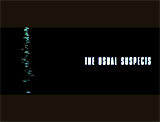
|
The Usual Suspects (1995) Director Bryan Singer's clever, and hip, plot-twisting, film-noirish heist thriller (with a sharp script by Christopher McQuarrie) was (and continues to be) a popular cult favorite. It starred Kevin Spacey as club-footed con man Roger "Verbal" Kint, and emphasized a central mystery surrounding the character of Hungarian mobster Keyser Soze. Most of the film was set in a police interrogation room where Kint convinced his captor, tough U.S. Customs Special Agent federal investigator Dave Kujan (Chazz Palminteri), about the enigmatic existence of Keyser Soze, a semi-mythical, cold-blooded "devil", and almost supernatural Hungarian crime lord and mastermind. According to Kint (told in flashback), a group of tough and savvy criminals (the ones on all the film's posters, in an NYPD line-up hauled in after a Queens, NY truck hijacking), including crooked ex-cop Dean Keaton (Gabriel Byrne), explosives specialist Todd Hockney (Kevin Pollak), entry man and sniper Michael McManus (Stephen Baldwin), Latino Fred Fenster (Benicio Del Toro), and Kint himself, pulled off a $3 million robbery of emeralds. Soze had also coerced the five thieves to go on a suicide mission to San Pedro harbor to commit a huge $91 million cocaine heist -- an act of sabotage against one of Keyser's own competitors in the drug trade. The weaselly, limping, club-footed Kint, a survivor of the explosion at the harbor, confessed truths, half-truths, double-crosses, and lies in the convoluted tale.
"The greatest trick the devil ever pulled was convincing the world he didn't exist."
The scene of the concluding plot twist, revealing the identity of Keyser Soze. The crippled Kint was released and limped away from the police station, as his hand deformity and his limp suddenly disappeared from his stride. Kujan simultaneously realized - upon breaking a coffee cup and other trivial clues - that Kint was, in fact, the greatly-feared, legendary criminal mastermind and kingpin Keyser Soze of Kint's own extraordinarily-fabricated story. To his stunned amazement, Kujan noticed that many of the elements of Kint's preposterous story were found on the bulletin board behind the desk. |
 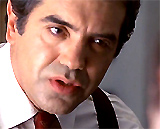 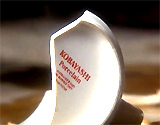 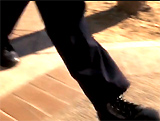
|